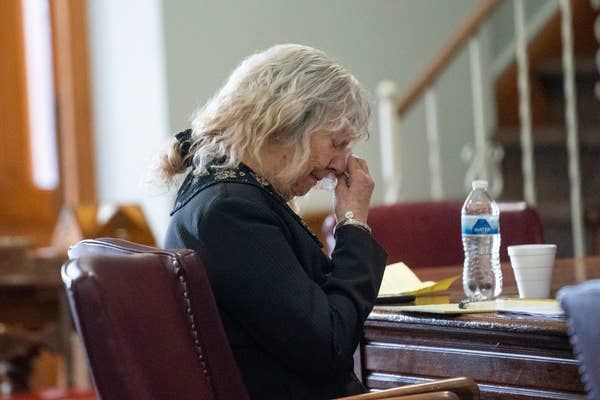The war between car manufacturers in electric vehicles (EVs) is sometimes akin to a competition for the most beautiful garden in the neighborhood.
All the neighbors look at each other like earthenware dogs. When you realize that the neighbors' roses form a flowery portico or that their garden is always well mowed and maintained, you wonder what their secret is. We try different gardening techniques and products to try to get the same result. When we realize that whatever we do we can't manage to replicate their flowery shrub or their impeccable lawn, we then bring down our last card: get our hands on their magic formula.
This is somewhat the path taken by Ford (F) to catch up with Tesla (TSLA) in the race to occupy consumer garages. Failing to invent 'Fordism', the giant from Dearborn, Michigan, copied what made Tesla's strength: adopt an agile approach in the manufacture of electric vehicles.
Tesla is known for introducing a new way of putting the car together. Tesla cars thus have more software than most vehicles, and they are integrated around a central software architecture. The advantage of this strategy thus allows Tesla to regularly update the software and optimize the performance of the vehicle.
Elon Musk's company proceeds to regularly update its core cars (Model 3, Model Y, Model X, Model S), adding new features as they are ready, and making adjustments all the time. It's called over-the-air strategy.
A Task Force to Reduce Costs
Ford CEO Jim Farley decided to copy this approach in the development of zero-emission battery electric vehicles (BEVs), unlike what the automaker was doing with the legacy internal combustion engine (ICE).
He has created a task force bringing together manufacturing, engineering, and purchasing teams, with the goal to reduce costs and improve profits margins.
"We also have a Task Force dedicated to lowering the bill of materials for our BEVs above and beyond just the usual declines in material costs," Farley told analysts during the fourth-quarter earnings call.
This new approach is currently at work in the development of the all-electric SUV Mustang Mach-E. Ford asked the task Force to make changes and improvements to the car as soon as they are available. The company no longer wait for traditional mid-cycle updates or model year changeovers to implement new updates in the car.
The manufacturer has, for example, reduced the parts of the Frunk (a trunk but in the front) from nine to two. The cooling system of four motors has two and from 60-70 hoses to about a third of that. All these changes were made after listening to customers and potential customers and comparing car data and putting different products in competition.
Ford has also made the choice to adopt heated seats as standard in Mustang Mach-E Trims. The advantage of this choice is that it allows the group to negotiate a good price with the supplier given the volume effect.
And It works, Farley says.
"On Mustang Mach-E, in just the last month, our team found $1,000 of opportunity per vehicle. And that’s delivered through design simplification, vertical integration and leveraging our scale with supply chain as we ramp up production And that team is just getting started," Farley told analysts. "Our customers are realizing the benefits of our over-the-air software updates, but that’s just the beginning."
Darren Palmer, Ford’s General Manager of battery-electric vehicles, told Automotive News Farley gave them a free hand.
“He said, ‘Gone. Stop that. Take that away,'” Palmer said. “We now do continuous improvement. You don’t wait for a model year; you just continually drop them in.”
Faster Repairs in The Event of Vehicle Recalls
Adopting the magic formula stolen from Tesla (tweaking cars continuously) also has the advantage of responding quickly to customer needs and improving the car fairly quickly.
"What we're finding with the Mustang Mach-E is that a lot more work for both improving the product as well as making it better business case, can be done after job one, because the vehicle is connected, over-the-air updates can have a huge advantage for the customer, we can keep renewing the vehicle," Ashwani Kumar Galhotra, President-Americas, International Markets Group, told Bank of America Merrill Lynch's analyst John Murphy during Bank of America Securities Conference on February 8.
He added that: "It also helps us take costs out. And we've been able to come up with very substantial opportunities for Mach-E since we've launched."
Ford also indicates that this new way of doing things has a positive impact on the quality, and it also makes it possible to carry out repairs in the event of vehicle recalls without having to return the vehicles to the dealerships. The company thus makes significant cost savings.
"We do everything possible to ship the highest quality vehicle, but there are times when there's an error state in the vehicle. We can use both the F-150 Lightning and the F-150 ICE vehicle that we just launched, it is so connected that we can solve a lot of the quality issues with over-the-air updates," Ashwani Kumar Galhotra told John Murphy. "Now, that may not seem like much, but that can have a very substantial impact on warranty, especially recalls. Can't imagine physically bringing in lots of vehicles to our dealerships to fix recalls, but if that particular error can be fixed through over-the-air, that's a tremendous cost-saving and simply it's much more convenient for the customer and much more important financially for us."
As a result, "we need a very different kind of skill set to design those vehicles, a lot more in software, a lot more in battery, and a lot more in over-the-air kind of skills. So, operationally, it is a very different business than internal combustions," Ashwani Kumar Galhotra concluded.

Youtube
Ford hasn't hesitated to hire at Apple and Tesla, the two companies considered to be the most innovative in recent years. The automaker notably poached two top talents from Tesla: Doug Field appointed in September as chief advanced technology and embedded systems officer, reporting directly to CEO Jim Farley.
Alan Clarke, who worked for 12 years at Tesla and was its director of new programs engineering, joined Ford in January in advanced EV development.
Ford wants to double worldwide EV manufacturing capacity to at least 600,000 by 2023 – and for fully electric vehicles to represent at least 40% of its product mix by 2030.
The Mustang Mach-E SUVs are among the vehicles on which the company relies to achieve these ambitious objectives, along with the F-150 Lightning pickups and the E-Transit commercial vans.
The Mach-E is already on the market, while Ford has started delivering the first E-Transits. The car manufacturer will start production of the F-150 Lightning, whose order book is, says Ford, already full, in the Spring.
Ford sold 27,140 units of the Mustang Mach-E in the U.S. in 2021, which was the model’s first full year of sales in the country. These sales of the Mach-E, which competes with Tesla's Model Y, have enabled Ford to become the second-largest producer of electric vehicles in the U.S behind Tesla but ahead of General Motors (GM).







